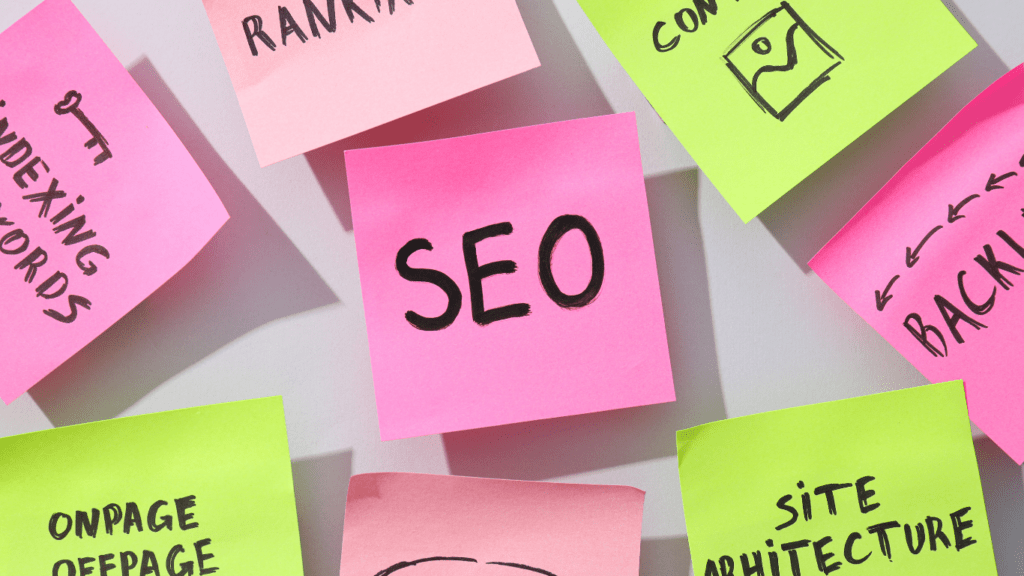In the world of digital marketing, understanding the distinctions between SEO (Search Engine Optimization) and SEM (Search Engine Marketing) is crucial for maximizing online visibility. As a seasoned blogger, I’ve delved deep into the realm of SEO and SEM to uncover their unique benefits and functionalities.
SEO focuses on optimizing website content to improve organic search rankings, while SEM involves paid advertising to enhance visibility on search engine results pages. By grasping the nuances between these two strategies, businesses can tailor their marketing efforts effectively to drive targeted traffic and boost conversions.
Join me as I unravel the key disparities between SEO and SEM, shedding light on how each approach can elevate your online presence and propel your digital marketing endeavors to new heights.
Key Differences Between SEO and SEM
In comparing SEO with SEM, it’s essential to understand the distinct approaches and benefits each strategy offers in digital marketing. SEO primarily focuses on optimizing website content to improve organic search rankings, while SEM relies on paid advertising for increased visibility on search engine results pages.
- Focus on Organic vs. Paid Results: SEO concentrates on enhancing organic search results by optimizing content, meta tags, and improving website performance. On the other hand, SEM involves paid advertising, such as pay-per-click (PPC) campaigns, to drive immediate traffic and visibility.
- Cost Considerations: SEO generally requires a long-term investment in content creation, technical optimization, and link building to achieve sustainable results. In contrast, SEM provides instant visibility but necessitates ongoing budget allocation for ad campaigns.
- Placement on Search Engine Results Pages (SERPs): With SEO, the goal is to rank higher in organic search results and improve website authority over time. SEM allows businesses to appear at the top of search results through paid ads and sponsored listings.
- Traffic Quality: Organic traffic from SEO tends to have higher quality and better conversion rates as it’s based on relevancy and trust. SEM traffic, although immediate, may vary in quality depending on the target keywords and ad relevance.
Understanding these differences is crucial for businesses to tailor their digital marketing strategies effectively. SEO focuses on long-term growth and sustainability, while SEM provides quick visibility and potential lead generation through paid advertising efforts. By leveraging the strengths of both SEO and SEM, businesses can maximize their online presence, drive targeted traffic, and improve overall conversions.
Importance of SEO and SEM in Marketing
In digital marketing, SEO (Search Engine Optimization) and SEM (Search Engine Marketing) are key strategies that significantly influence online visibility, traffic, and conversions. SEO focuses on optimizing content, meta tags, and website performance to improve organic search rankings, while SEM uses paid advertising like PPC campaigns to provide immediate visibility and targeted traffic.
Both SEO and SEM are vital for a well-rounded digital marketing approach. SEO lays the foundation for long-term growth, while SEM delivers instant exposure and precise targeting, ensuring businesses can maximize their online presence and drive conversions effectively.
Benefits of SEO
I’ll delve into the benefits of SEO, particularly how it leads to increased organic traffic and improved website visibility.
Increased Organic Traffic
By focusing on SEO strategies, I can boost organic traffic to my website. Optimizing content and meta tags helps search engines recognize my site’s relevance, leading to higher rankings and increased clicks from users searching for related topics.
Improved Website Visibility
With SEO, I enhance my website’s visibility in search engine results without having to rely solely on paid ads. By strategically incorporating keywords and creating high-quality content, I can ensure that my website appears in relevant searches, attracting more potential customers and improving overall brand visibility online.
Benefits of SEM
When it comes to Search Engine Marketing (SEM), there are various advantages that businesses can leverage to enhance their online presence and reach their target audience effectively.
Immediate Results
In SEM, one of the key benefits is the ability to achieve immediate results through paid advertising strategies like pay-per-click (PPC) campaigns. Unlike SEO, where results can take time to materialize, SEM allows businesses to quickly appear at the top of search engine results pages by investing in paid ads.
This instant visibility can lead to immediate website traffic and potentially faster conversions.
Best Practices for SEO and SEM
In digital marketing, optimizing both SEO and SEM strategies is crucial for enhancing online visibility, driving targeted traffic, and improving conversions. Here are some best practices for effectively implementing SEO and SEM techniques:
SEO Best Practices
- Keyword Research and Optimization: I focus on comprehensive keyword research to identify high-value keywords relevant to my content. By strategically incorporating these keywords into my website content, meta tags, and headings, I help search engines recognize the relevance of my site, leading to improved organic rankings.
- High-Quality Content Creation: My approach to SEO involves creating high-quality, informative content that not only engages visitors but also aligns with search intent. By developing content that addresses user queries and provides valuable insights, I aim to improve user experience and boost organic traffic over time.
- On-Page Optimization: I pay attention to on-page optimization elements such as title tags, meta descriptions, and internal linking structure to enhance the visibility of my web pages in search results. Optimizing these elements according to best practices helps improve click-through rates and overall site performance.
- Mobile Optimization: Recognizing the significance of mobile traffic, I ensure that my website is mobile-friendly and offers a seamless user experience across devices. Optimizing site speed, readability, and design for mobile users contributes to better search rankings and increased organic traffic.
- Targeted Ad Campaigns: I create targeted ad campaigns using SEM platforms like Google Ads to reach specific audience segments and drive immediate traffic to my website. By selecting relevant keywords, crafting compelling ad copy, and optimizing landing pages, I aim to maximize the effectiveness of my paid advertising efforts.
- Ad Extensions and Sitelinks: I utilize ad extensions and sitelinks in my SEM campaigns to provide additional information to users and enhance the visibility of my ads in search results. By including relevant extensions like site links, callouts, and structured snippets, I improve ad quality and encourage users to take desired actions.
- Ad Budget Management: I carefully manage my ad budgets to optimize the performance of my SEM campaigns and achieve maximum ROI. By monitoring key metrics such as cost per click (CPC), click-through rate (CTR), and conversion rate, I make data-driven decisions to allocate budget effectively and drive conversions.
- A/B Testing and Optimization: I regularly conduct A/B tests on my ad creatives, landing pages, and targeting parameters to identify high-performing strategies and optimize campaign performance. Testing different variables allows me to refine my SEM campaigns and improve their overall effectiveness.
By implementing these best practices for SEO and SEM, I strive to maximize the impact of my digital marketing efforts, attract quality traffic, and enhance the online presence of my business.Understanding the nuances of SEO and SEM and leveraging the strengths of each strategy can significantly benefit my overall marketing strategy and contribute to achieving long-term success in the digital landscape.

 Patrick Longsonicster is a vital member of the Squad Digital Hack team, contributing his skills in digital marketing to help build a robust platform for users. With a strong focus on developing effective content marketing strategies, Patrick ensures that the platform provides actionable insights that resonate with businesses and marketers. His dedication to enhancing user experience and optimizing marketing techniques has made a significant impact, equipping users with the tools they need to thrive in the digital landscape.
Patrick Longsonicster is a vital member of the Squad Digital Hack team, contributing his skills in digital marketing to help build a robust platform for users. With a strong focus on developing effective content marketing strategies, Patrick ensures that the platform provides actionable insights that resonate with businesses and marketers. His dedication to enhancing user experience and optimizing marketing techniques has made a significant impact, equipping users with the tools they need to thrive in the digital landscape.